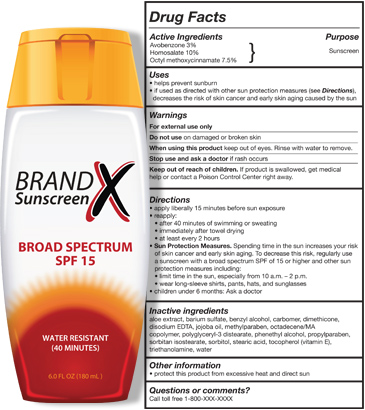Drugs
Sunscreen
Spending time in the sun increases the risk of skin cancer and early skin aging. To reduce this risk, consumers should regularly use sun protection measures including:
Use Broad Spectrum sunscreens with SPF values of 15 or higher regularly and as directed
Reapply sunscreen at least every 2 hours, more often if you’re sweating or jumping in and out of the water.
Limit time in the sun, especially between the hours of 10 a.m. and 2 p.m., when the sun’s rays are most intense.
Wear clothing to cover skin exposed to the sun; for example, long-sleeved shirts, pants, sunglasses, and broad-brimmed hats
See Sun Safety: Save Your Skin! for additional information on sun protection, including tips for applying sunscreen.
In June 2011 FDA announced significant changes to sunscreen products that will help consumers decide how to buy and use sunscreen, and allow them to more effectively protect themselves and their families from sun-induced damage. For more information about these changes, see Questions and Answers and FDA Regulatory Action on Sunscreen.
|
|
Additional Consumer Information
- Sun Safety: Save Your Skin!
FDA Consumer Update - Don't Fry Day, May 25: Skin Cancer is Most Common Cancer in U.S., Yet One of the Most Preventable
Environmental Protection Agency (EPA) news release (5/17/2012) - Don't Fry Day (the Friday before Memorial Day)
Protect your skin while enjoying the outdoors FDA Sheds Light on Sunscreens
FDA Consumer Update
FDA Regulatory Action on Sunscreen
- Delay of Compliance Dates: Labeling and Effectiveness Testing; Sunscreen Drug Products for Over-the-Counter Human Use
Federal Register Notice (5/11/2012) - Questions and Answers on Sunscreen
updated 6/23/2011 FDA Sheds Light on Sunscreens
FDA Consumer UpdateFDA Announces Changes to Better Inform Consumers About Sunscreen
FDA press release (6/14/2011)Webcast (archived) of FDA Announcement Regarding OTC Products, 6/14/2011 
- Graphics of Sunscreen Labeling According to 2011 Final Rule (PDF - 3MB)
Final Rule: Labeling and Effectiveness Testing; Sunscreen Drug Products for Over-the-Counter Human Use Proposed Rule: Revised Effectiveness Determination; Sunscreen Drug Products for Over-the-Counter Human Use - Notice of Availability: Draft Guidance for Industry on Enforcement Policy for Over-the-Counter Sunscreen Drug Products Marketed Without an Approved Application
Advance Notice of Proposed Rulemaking: Sunscreen Drug Products for Over-the-Counter Human Use; Request for Data and Information Regarding Dosage Forms Comment Request: SPF Labeling and Testing Requirements and Drug Facts Labeling for Over-the-Counter Sunscreen Drug Products; Agency Information Collection Activities; Proposed Collection - Guidance for Industry: Enforcement Policy -- OTC Sunscreen Drug Products Marketed Without an Approved Application (PDF - 83KB)









